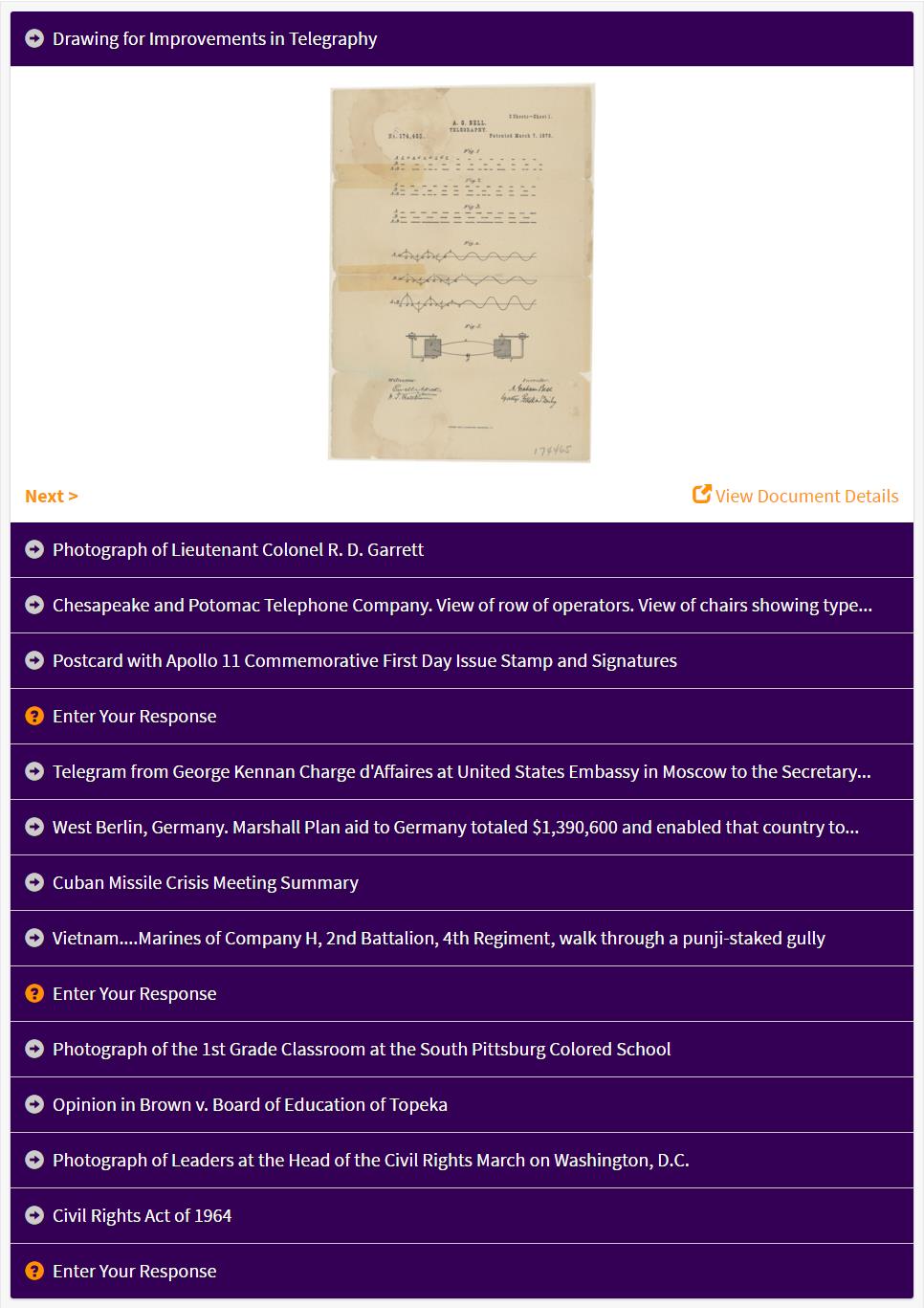Suggested Teaching Instructions
Learning ObjectivesStudents will draw upon the visual and textual data presented in photographs and documents to consider possible National History topics related to the NHD theme:
Revolution, Reaction, Reform in History.
Then students will evaluate the documents in each group to determine which two documents can best be used in a hypothetical NHD project. This lesson provides both specific content (e.g., dates, names) and asks students to draw connections that go beyond observation to analysis, synthesis, and evaluation.
For grades 6-12. Approximate time needed is 45 minutes.
InstructionsQuickly show all the documents included in the activity to the class. Model careful document analysis with the first set of documents. Encourage students to select "View Document Details” for further information when they begin their own analysis.
Divide students into small groups and explain the process they will use to answer the questions they encounter (see instructions for list-creation and questions for consideration below).
Direct them to begin the activity by reading the introduction and analyzing the subsequent four documents for meaning. The directions tell students to answer the following questions in the first blank text box:
- What connections exist between the documents? What topic do the documents represent?
- Do the documents represent a revolution, a reaction or a reform in history?
- If these documents were to be used as part of an NHD project on the topic represented, which two would you choose and why?
Before students answer the third question, ask them to make two lists for each document:
1. Reasons that the document should be included in their NHD project.
2. Reasons that the document should NOT be included in their NHD project.
Tell them to consider the following questions as well: (You may want to print the questions for students to use as they complete the analysis.)
- Does the item fit with the NHD theme and the topic of the project?
- Does the item advance the narrative of the project?
- Is a document too long or too wordy? Is it easy to read and understand?
- Is the item visually interesting? Does it contain a famous signature? Is it handwritten or typed? Does the document or photo have color or take an unusual form? Does it have interesting markings such as seals, handwritten comments, or a "Top Secret" stamp? Is it on letterhead?
- What kind of information can be obtained from a photo, drawing or painting that is different from a written document? Why is an image appealing, encouraging a viewer to study it rather than just glance and move on to the next item? Does a person’s face or gestures tell something about personality or character? Does the image show action or is it posed? Does the image sum up an event or an idea so well that lengthy captions are not needed?
After finishing analysis, categorization, and evaluation of the first set of documents, instruct students to continue to the next two sets of documents and repeat the same procedures.
After analyzing all three sets of primary source documents, direct students to click “I’m Done” and to answer the questions in the conclusion box. Ask students to share their responses with the class, and encourage further discussion about the best application of primary sources in an NHD project.
Find more teaching activities and documents related to National History Day topics on the DocsTeach National History Day page. Find more
NHD resources from the National Archives.
For more information about the featured documents, follow the links below.





